Posted by Allan Wilson on the 29th May, 2019

Most people think that it is good for people with dyslexia to learn to touch type to help them develop writing skills. But how does typing help, what is the evidence for this, and how should people learn to touch type? (This blog accompanies a webinar I am presenting on May 29th on Touch Typing for Learners with Dyslexia. If you are reading this after that date, you should still be able to view the webinar in the CALL Scotland webinar archive.)
How does Touch Typing help?
Many people with dyslexia also have dyspraxia, or dysgraphia, or have other difficulties with writing. Their writing can be messy and illegible, and they begin to hate their handwriting, so they never read through a piece of work after it is written, or read their notes while revising for an exam. In contrast, typed work looks good and is much easier to read - they can take pride in their work.
Touch Typing (or any typing) provides access to the support that technology can bring for writing - autocorrect, spelling and grammar checkers, text-to-speech support to help with proofreading.
The more somebody improves their typing skills, the more they develop automaticity in their typing so that they can type common words without thinking. Muscle memory helps with common letter combinations e.g. "ight", occurring in words such as "fight", "light" and "right".
Once a level of automaticity is achieved, it becomes much easier to concentrate on the creative aspects of writing, playing to the strengths of many people with dyslexia, without having to worry about the process of putting letters together to form words.
What does the Research say?
I went looking through the research, hoping to find a few studies, where groups of people some with dyslexia, some without, had their writing skills "measured" in some way before and after learning to touch type, and where any "deficit" in writing skills in the dyslexic group was significantly reduced, or eliminated, after the completion of the touch typing course. As is often the case, there has been research around the subject, but it rarely answers the key questions!
- The effect of a touch-typing program on keyboarding skills of higher education students with and without learning disabilities by Marom and Weintraub looked at the effect of a touch-typing instructional program on keyboarding skills of higher education students. They considered two groups of students, one with developmental learning disabilities (including dyslexia) and one made up of "normally achieving" students and provided touch typing instruction. Their findings suggest that while it may take the students with learning disabilities longer to achieve automaticity in typing, they can achieve similar speeds to the others. "This is especially important for students with writing disabilities, since they often use the computer in order to circumvent their handwriting difficulties."
Learning to Type
Low tech methods, even something as simple as a printed keyboard layout, can help develop keyboard familiarity. One of the keys to success is to be able to type without looking at the keyboard. Many years ago, typing schools used to use simple wooden frames placed over the keys to hide them. It is still worth using this technique.
Online Typing Tutors
It used to be that people would buy a typing program, e.g Mavis Beacon, in order to improve their typing skills, but with the growth of the internet there has been a general move towards the use of online typing tutors, many of which are free to use. Here are a few of the many online typing tutors currently available
BBC Dance Mat Typing (free) - This is a fun resource, aimed at Primary pupils, taking users through a series of levels, gradually introducing the different keys on the keyboard, providing opportunities for practice. There are also games and fun activities at the end of each level. It is designed to be enjoyable for young learners and its popularity suggests that it has succeeded in this aim, but the screen can be cluttered, with lots of distractions and some learners may find it a bit overwhelming. Practice is designed around introducing groups of letters, initially typing these letters in patterns, then moving on to practising real words.
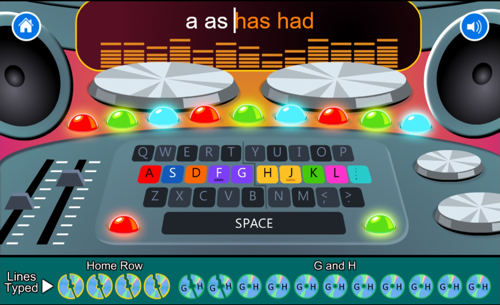
Doorway Online - Text Type 3 (free) - This is a very popular activity on the Doorway Online web site, also aimed at young children, which provides a much simpler user experience. There is considerable flexibility in initial settings with regard to the use of colour, speech feedback, etc. Different keys are introduced over the course of 56 exercises, each of which reinforces existing knowledge, introduces the new key and then moves on from typing key combinations to real words. The exercises can seem repetitive, but there is a definite sense of learning. Craig from CALL recently produced a guide to using Text Type 3, Doorway Online Text Type 3 Practice Workbook, and wrote a Blog about his experience of learning to touch type.
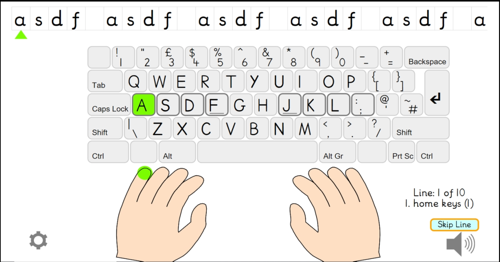
Big Brown Bear (free) - This has an attractive, but simple layout, with individual keys offered across 14 lessons. Where possible, it uses 'real' words, rather than key combinations for practice and it also provides an error count and time indication on the screen during the course of each exercise. Note that Big Brown Bear was developed using the Adobe Flash system, which some web browsers now block, or force you to update, as a result of security concerns. You may decide to avoid it because of the extra hassle, but it is worth giving it a try.
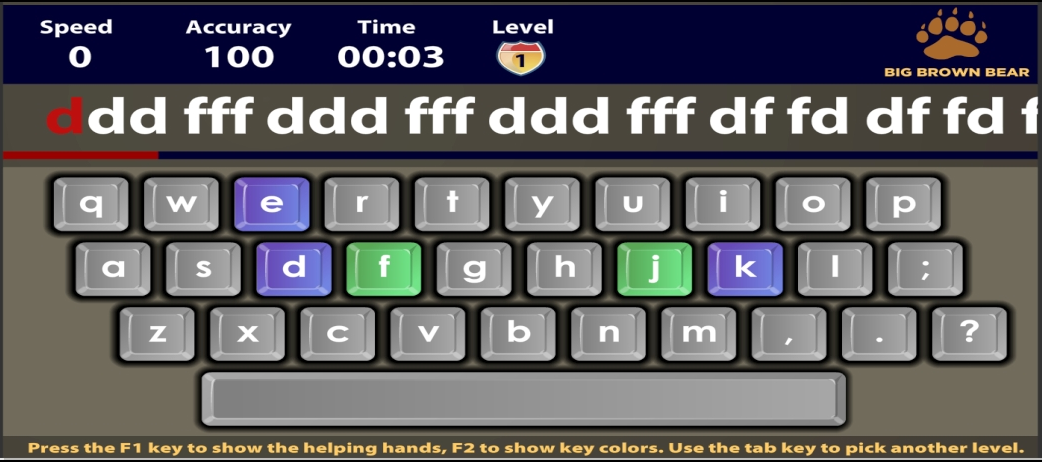
Typing Club (basic version free, upgrade (£6.50/month) to remove ads, get more games, better record keeping, etc.) - This uses animations, games, practice and revision sessions across a massive number of 682 activities, along with basic statistics. Most users won't feel the need to upgrade as they should find all they need within these activities.
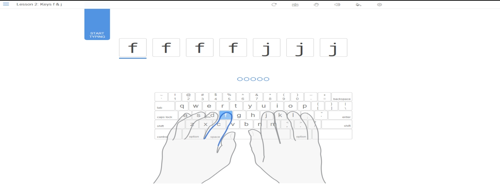
Keybr.Com (free) - This primarily offers lots of practice exercises for improving touch typing skills, rather than introducing keyboarding from the start. I wouldn't start with it, but if you started with another program and still want further practice, it is worth considering Keybr.
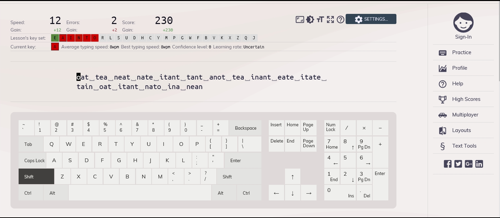
The above selection should be able to meet most needs, but if you want to find something else, the American Hindie Dershowitz has produced a list of 26 online tutors - note that her list hasn't been updated for around five years so some of the sites may no longer be available.
Using an iPad
Trying to touch type on an iPad screen can be a little awkward as there are no 'bumps- on the F and J keys and the keys are smaller than on a standard keyboard. The word prediction facility on the standard iOS keyboard and the Siri speech recognition reduces the need for touch typing. If you decide that you still want to touch type, it would be best to get a separate keyboard for the iPad, either a bluetooth keyboard, or, in the case of an iPad Pro, an Apple Smart Keyboard. Most of the online typing tutors can be used with an iPad using an external keyboard. The exception is Big Brown Bear, as the iPad does not allow the use of Flash applications.
There are apps available for use with the standard iPad screen, e.g. TapTyping, but this still has the problem of locating the F and J keys to start with - you really have to look!
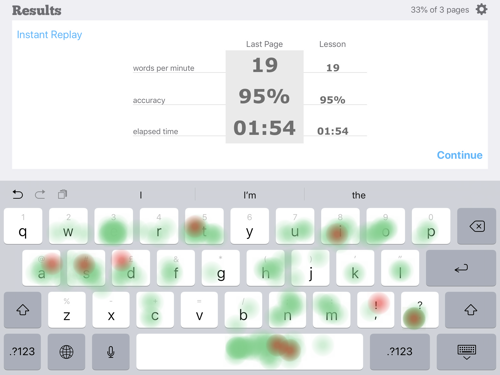



Our social media sites - YouTube, Twitter and Facebook